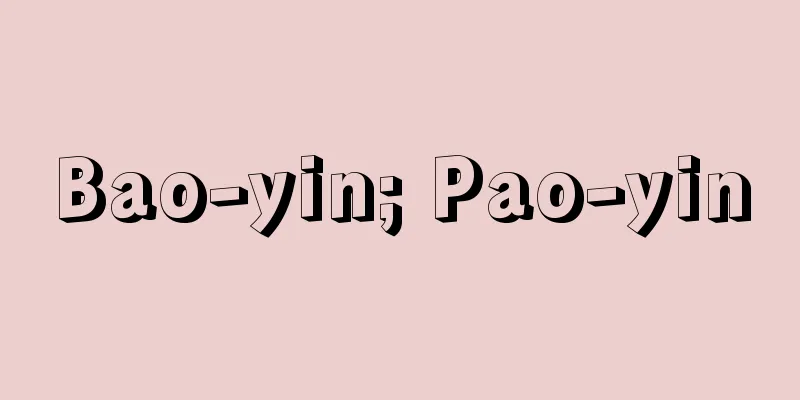Wrapping - Wrapping

|
During the Sengoku period, the term referred to flags and horse banners used to distinguish friend from foe, but in the Edo period, it came to refer exclusively to the mark of firemen. The former, 'matsuri', is said to have been first used by a retainer of Hojo Ujiyasu during the Eiroku and Genki eras (1558-1573). Famous examples include Toyotomi Hideyoshi's golden Sennari gourd and Tokugawa Ieyasu's golden fan. In the Edo period, when feudal lord firemen and bannermen were established, they came up with banners decorated with dashi (a sacred symbol) decorations based on the family crest or ancestral history, and competed with each other for the most extravagant banners, such as the silver-lacquered drums of the Kaga Tobi (a clan of one million koku) of the Kaga Domain, and the banners with the sun and moon and the original characters of Honda Noto no Kami (the governor of the domain). In 1718 (the third year of the Kyoho era), the system of town firemen was established in Edo, and gradually improved, and when the small groups of 48 Iroha groups (with the characters "hyaku", "sen", "man" and "hon" instead of "he", "ra", "hi" and "n") were placed under the 10 large groups, each small group was allowed to have its own banner as a mark. The shape changed slightly over the years, but by the end of the Edo period, it had taken on the shape commonly known as Matoi, with a 2 shaku (approximately 60 cm) long Dashikazari decoration, white lacquer coating and a baren (a circular frame with thin strips of paper or leather hanging down). The Matoi bearers were also simply called Matoi, and competed with each other as firemen and at events as the symbol of the group. [Hiroko Katagiri] Source: Shogakukan Encyclopedia Nipponica About Encyclopedia Nipponica Information | Legend |
|
戦国時代には、敵味方の目印にするために用いた幟(のぼり)や馬印(うまじるし)のことであったが、江戸時代になると、もっぱら火消組の目印をさすようになった。前者の纏は、永禄(えいろく)・元亀(げんき)(1558~73)のころ北条氏康(うじやす)の家臣が初めて用いたと伝えられる。有名なものとして、豊臣(とよとみ)秀吉の金の千成瓢箪(せんなりびょうたん)や徳川家康の金の扇などがある。 江戸時代、大名火消や旗本の定火消(じょうびけし)ができると、家紋や先祖の由緒にちなんだ陀志(だし)飾りのついた纏が考案され、加賀百万石の加賀鳶(とび)の銀塗り太鼓や、本多能登守(のとのかみ)の本文字に日月の纏など、それぞれに華美を競った。1718年(享保3)江戸に町火消の制が定まり、しだいに整備されて、10組の大(おお)組の下にいろは四十八組(ただし、「へ」「ら」「ひ」「ん」のかわりに「百」「千」「万」「本」)の小(こ)組が置かれると、各小組ごとに目印として纏を持つことを許される。時代により形が多少変わったが、江戸時代の末ごろには、陀志飾りの長さ2尺(約60センチメートル)、白漆塗りで馬簾(ばれん)(円形の枠に、細い紙や革の条を長く垂らしたもの)のついた、一般によく知られる纏らしい形となった。なお、纏持ちのことを単に纏ともよび、組のシンボルとして、火消しや行事で競い合った。 [片岸博子] 出典 小学館 日本大百科全書(ニッポニカ)日本大百科全書(ニッポニカ)について 情報 | 凡例 |
<<: Matua Island (English spelling)
>>: Window - Mado (English spelling)
Recommend
Astilbe microphylla (English spelling)
… [Michio Wakabayashi]. … *Some of the terminolog...
Ayers Rock
A rocky mountain located 440km (by road) southwest...
Medici, P.II de' (English spelling)
… [Hideo Katayama]. … *Some of the terminology th...
Food service industry
A general term for the industry that provides foo...
Machaty, G.
…In 1907, the first permanent cinema was built in...
Charles Mingus
American jazz bassist and composer. Born in Arizo...
Eustachian tube - Time
It is a 36 mm long tube that starts from the tymp...
discount policy
In addition to these basic pricing policies, ther...
Soft-ground etching
…Gilles Demarteau (1729-76) and Louis-Marin Bonne...
Kataoka Shoen
…(1) Bando Tsumasaburo (1925-36. Hachigaoka, Kyot...
Abhramū (English spelling)
...The first male born was called Airāvata, and i...
Seo Chung-kyung - Joteikei
A Chinese poet from the mid-Ming period. His pen ...
Ethnomycology
...On the one hand, it is feared as a demonic cre...
Dumka (English spelling)
A town in the eastern part of Bihar state in north...
Movement of hands - Unshin
A type of sewing technique that is the basis of h...









